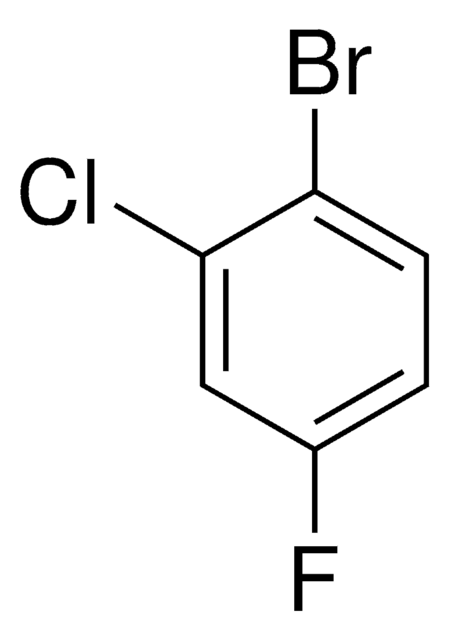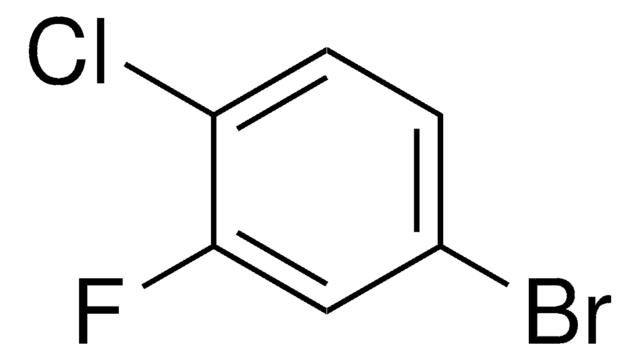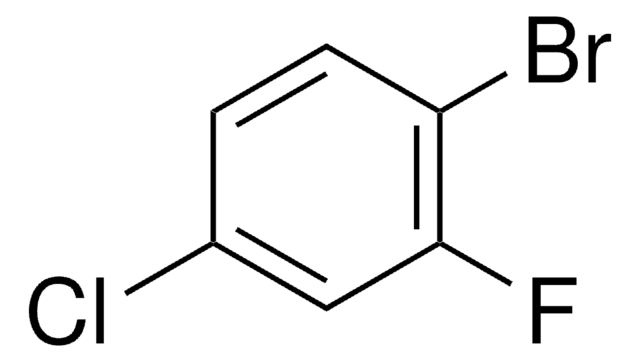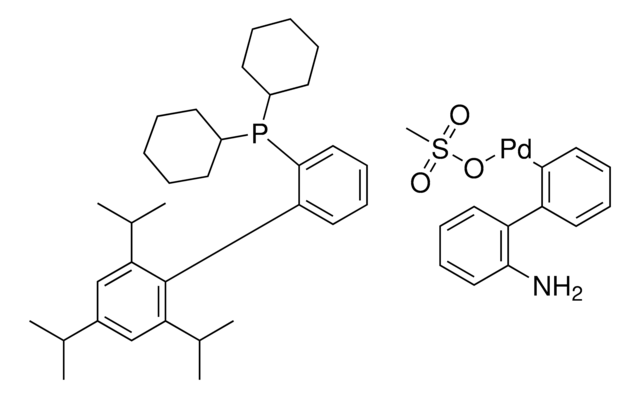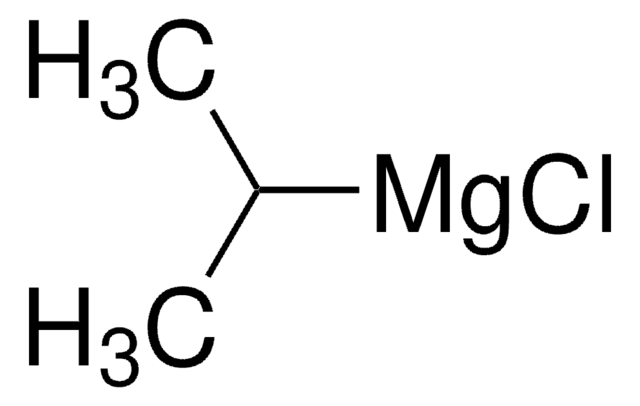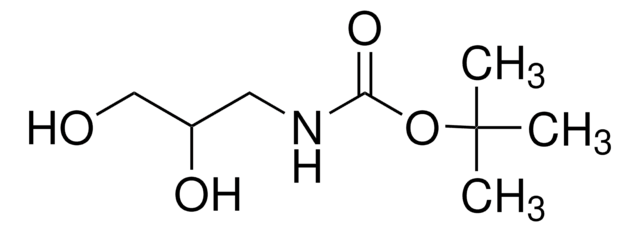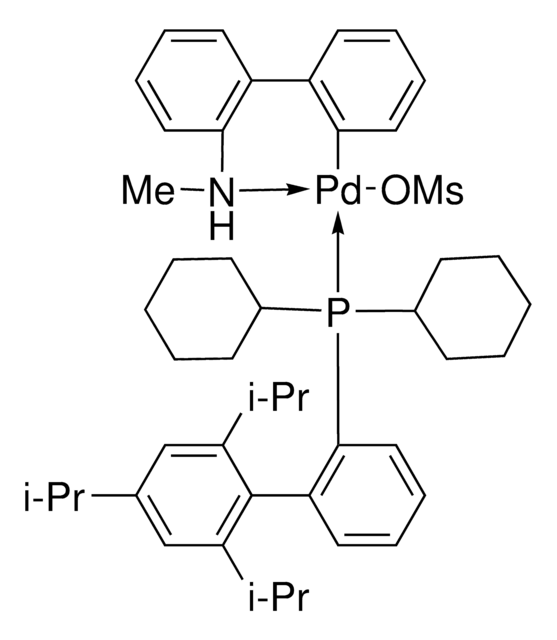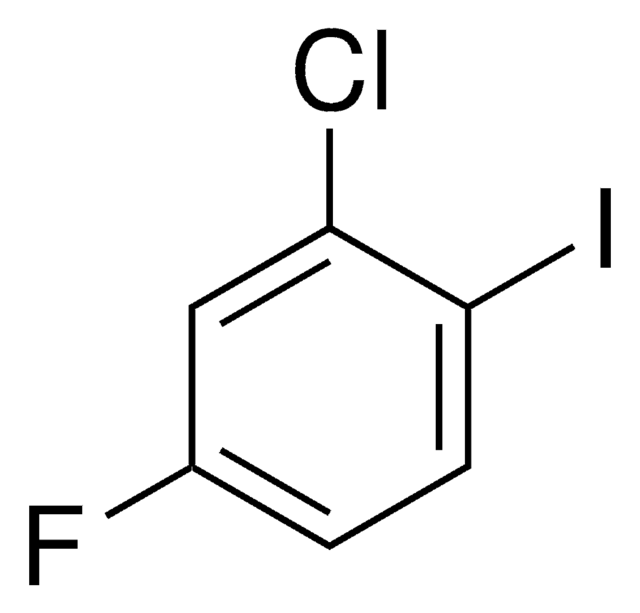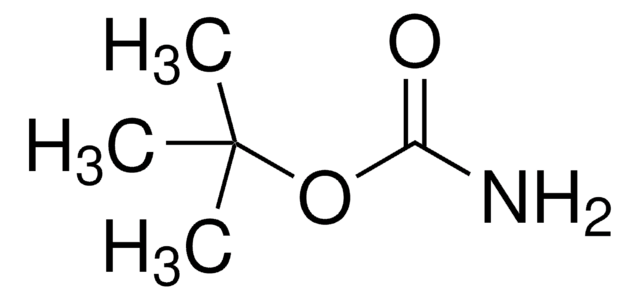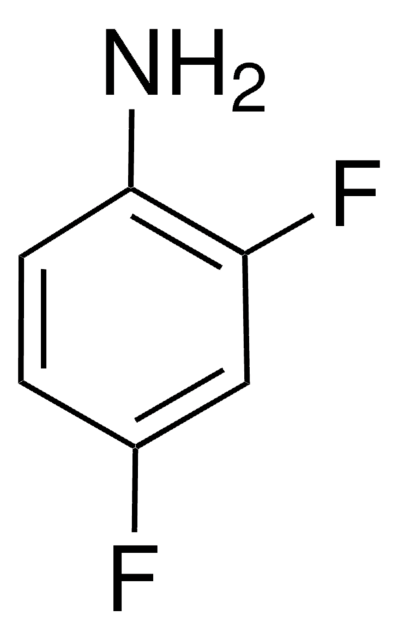All Photos(1)
Linear Formula:
BrC6H3(Cl)F
CAS Number:
Molecular Weight:
209.44
EC Number:
MDL number:
UNSPSC Code:
12352100
PubChem Substance ID:
NACRES:
NA.22
Recommended Products
Assay
99%
form
liquid
refractive index
n20/D 1.553 (lit.)
bp
194 °C (lit.)
density
1.727 g/mL at 25 °C (lit.)
SMILES string
Fc1ccc(Br)cc1Cl
InChI
1S/C6H3BrClF/c7-4-1-2-6(9)5(8)3-4/h1-3H
InChI key
CJTIWGBQCVYTQE-UHFFFAOYSA-N
Looking for similar products? Visit Product Comparison Guide
Application
4-Bromo-2-chloro-1-fluorobenzene may be used for the preparation of 2-(3-chloro-4-fluorophenyl)-4,4,5,5-tetramethyl-1,3,2-dioxaborolane.
Signal Word
Warning
Hazard Statements
Precautionary Statements
Hazard Classifications
Acute Tox. 4 Oral - Aquatic Acute 1 - Aquatic Chronic 1 - Skin Irrit. 2
WGK
WGK 3
Flash Point(F)
192.2 °F
Flash Point(C)
89 °C
Personal Protective Equipment
dust mask type N95 (US), Eyeshields, Gloves
Regulatory Information
新产品
Certificates of Analysis (COA)
Search for Certificates of Analysis (COA) by entering the products Lot/Batch Number. Lot and Batch Numbers can be found on a product’s label following the words ‘Lot’ or ‘Batch’.
Already Own This Product?
Find documentation for the products that you have recently purchased in the Document Library.
Mark S Jensen et al.
The Journal of organic chemistry, 70(15), 6034-6039 (2005-07-16)
A practical synthesis of 2-[3-(4-fluoro-3-pyridin-3-yl-phenyl)-imidazo[1,2-a]pyrimidin-7-yl]-propan-2-ol (1), an oral GABA(A) alpha(2/3)-selective agonist, is described. The five-step process, which afforded 1 in 40% overall yield, included imidazopyrimidine 2 and pyridine boronic acid 4 as key fragments. The synthesis is highlighted by consecutive
James A Newby et al.
Chemistry (Weinheim an der Bergstrasse, Germany), 20(1), 263-271 (2013-12-18)
Conducting low-temperature organometallic reactions under continuous flow conditions offers the potential to more accurately control exotherms and thus provide more reproducible and scalable processes. Herein, progress towards this goal with regards to the lithium-halogen exchange/borylation reaction is reported. In addition
Our team of scientists has experience in all areas of research including Life Science, Material Science, Chemical Synthesis, Chromatography, Analytical and many others.
Contact Technical Service